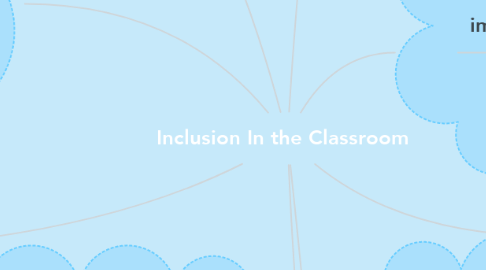Inclusion In the Classroom
by N A

1. How can an environment be inclusive?
1.1. having materials that represent the community
1.2. allowing students opportunities to show off their talents and potential
1.3. Encouraging students to work together and show leadership
1.4. Encourage positive communication skills
2. What teachers can do to be inclusive?
2.1. Allow students to discuss their feelings
2.2. Never shaming a child for their feelings and guide them through their issues
2.3. Allowing students to their self-expression and encouraging students on their work.
2.4. understanding bias and unlearn previous assumptions
2.5. acknowledge a child's work and complimenting how they're doing
3. Benefits of inclusion
3.1. students are more likely to speak their mind
3.2. Children are more empathetic and are more accepting each child's differences
3.3. Children can support each other
4. What kind of materials that represent the community?
4.1. media with characters that represent different communities (POC, LGBT, etc.)
4.2. Have different ways of teaching for all kind of learners (visual, verbal, etc)
4.3. have learning accommodations for students
5. How I felt when being included
5.1. happy
5.2. motivated
5.3. Excited
5.4. supported
5.5. inspired
5.6. Confident
6. impact of exclusion
6.1. unmotivated in learning or fear of speaking out
6.2. increase of bullying and neglect
6.3. fears of anxiety
7. how to be inclusive
7.1. being respectiful
7.2. Encouraging a sense of belonging
7.3. learning from others
7.4. communicating
8. Examples of exclusion
8.1. Favortism
8.2. ostrasizing
8.3. bullying


